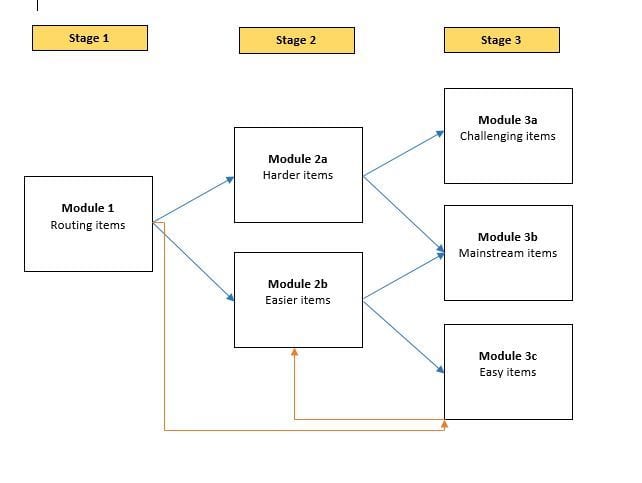Development of the RVEAL assessment instrument
1. How were the assessment items developed?
The assessment items were developed between 2013 and 2016 by a number of curriculum and assessment experts.
1,200 items were trialled by approximately 13,500 EAL students in Victoria in 2014 and 2015. The results of the trials were analysed by curriculum and psychometric experts in order to confirm the validity and reliability of all of the items.
The cut-off points between the B1 – B3 and C1 – C4 stages were translated onto a common scale, called the Reading and Vocabulary Proficiency Scale.
All Pathway B and Pathway C items were ‘concurrently calibrated’, which enables students who move from primary to secondary school to be reported on the same scale.
2. What does a ‘multi stage adaptive’ design mean?
RVEAL uses a multi-stage adaptive assessment design. This type of assessment uses modules, or collections of items, to determine student pathways through the assessment. Each module consists of groups of self-contained items which assess both reading and vocabulary skills.
Difficulty is adjusted and determined by a student’s performance in the previous module.
RVEAL multi-stage adaptive assessment design
3. What theoretical considerations underpin RVEAL?
The RVEAL assessment instrument is based on Vygotskian theory and assessment for learning principles. Psychometrically, it draws in the Rasch model of item response theory. All items developed for use in RVEAL were trialled and then analysed using these principles. The Rasch model reports items and student abilities using a logarithmic scale known as the logit scale. Logits can be both positive and negative in value. Each assessment item was designed with a particular logit value and a corresponding level on the Victorian Curriculum F-10 EAL.
However, because logits can be both positive and negative in value, reporting and interpretation of a student’s results can be difficult. The EAL Reading and Vocabulary Proficiency Scale translates these logit values to a positive whole number. This makes the scale more meaningful and facilitates their interpretation for teachers and school leaders.

